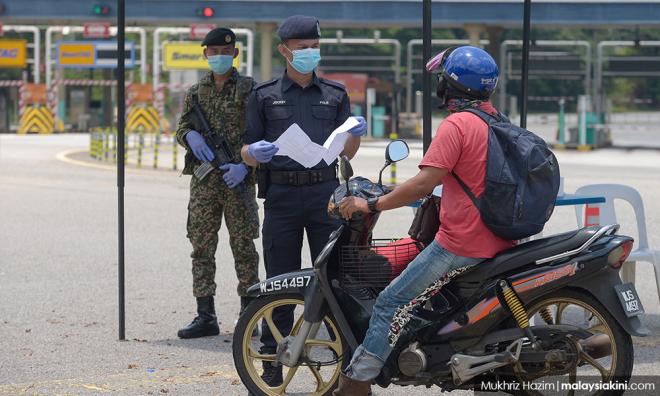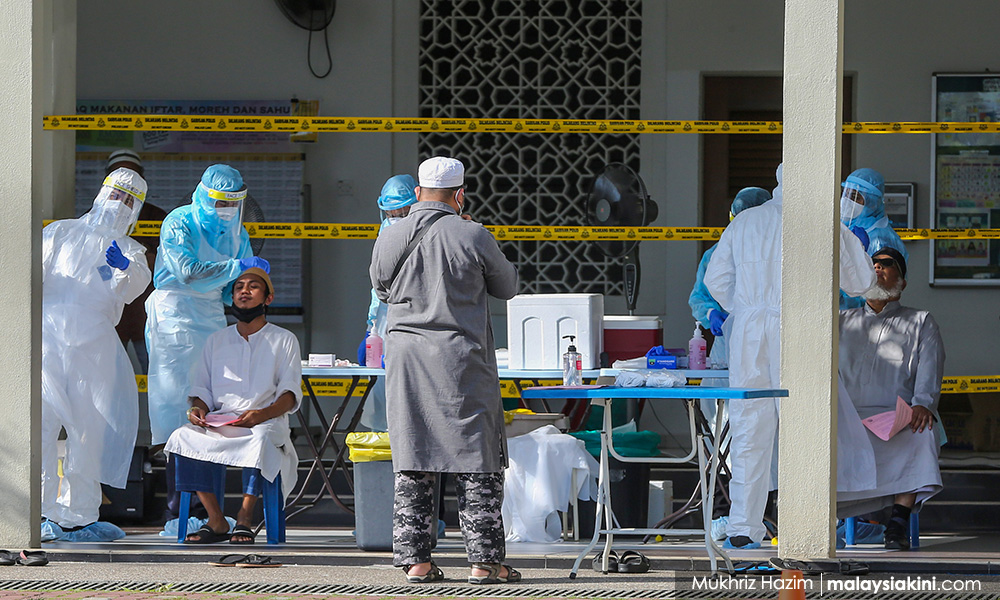
CORONAVIRUS | A local research team has recommended that the movement control order (MCO) imposed by the government to contain the Covid-19 pandemic be lifted in staggered phases.
The researchers said the staggered lifting is paramount to resume economic activities in the country after some businesses came to a shuddering halt due to the MCO, which started on March 18.
The team, led by Naomie Salim from the Faculty of Engineering of Universiti Teknologi Malaysia, has conducted a research entitled "Covid-19 epidemic in Malaysia: Impact of lockdown on infection dynamics".
Her team members from the same faculty are Chan Weng Howe, Shuhaimi Mansor, Nor Erne Nazira Bazin, Ahmad Athif Mohd Faudzi, Anazida Zainal, Sharin Hazlin Huspi, Eric Khoo Jiun Hooi, Shaekh Mohammad Shithil, and a public health physician in epidemiology, Dr Safiya Amaran from the Faculty of Medicine, Universiti Sultan Zainal Abidin.
Speaking to Bernama, Naomie said her team suggested that such implementation can be executed according to each location’s outbreak control level.
“It can be done by zones, based on Covid-19 health index, for instance, red zone (remain enhanced MCO), orange zone (continue MCO but increase alertness) and yellow zone (partial MCO with good practice of social distancing and hygiene),” she said on Wednesday.
Red zones are districts with more than 41 cases, while orange zones have 20-40 cases, yellow zones (one-19 cases), and green zones are those with no cases of Covid-19.
The team cautioned that the government cannot lift the MCO altogether as long as there are still new cases reported, as this may trigger another wave of infection.

They explained that the first phase of MCO enforced showed some effect but still inadequate to halt the outbreak due to the lack of understanding and preparation of the citizen.
They added that the second phase of MCO with enhanced measures may restrict movement, but this gradual enforcement may delay the break of this chain of infection.
Asked on their view should the government extend the MCO for the third time, her team opined that all precautionary measures must be taken to restrict the contact of an infected person, especially those who are under home surveillance and self-quarantine.
Meanwhile, the research forecasted that the earliest possible for the outbreak in Malaysia to peak is on April 19 and the latest estimated peak maybe at the end of May, depending on the type of prediction model.
The team has utilised a number of models, including the curve fitting with probability density function and skewness effect modelling, SIR model and System Dynamic model.
“Compared to actual total infected data from March 18 to April 6, curve fitting with probability density function and skewness effect modelling is the most accurate that has 99.99 percent of accuracy with an estimation of 5,637 positive cases.
“However, each model has its own strength... the SIR model basically gives us an idea where based on the current data, how the outbreak would progress and from that model, it shows that the impact of MCO in creating social distance and this helps flatten the curve,” Naomie said.
She also said that a more detailed System Dynamic Model is able to show that the effectiveness of the MCO phase two is still not optimum.
On how they gathered their data, she said the team extracted data from various websites such as Worldometer, 2019 Novel Coronavirus Visual Dashboard from Johns Hopkins University Centre for Systems Science and Engineering, Ministry of Health Malaysia website, as well as from local news websites.
On the other hand, the team said that Malaysians can be empowered by getting adequate and timely information as they must understand the importance of MCO and the reason why it is implemented, thus increasing the MCO compliance level.
- Bernama



No comments:
Post a Comment
Note: Only a member of this blog may post a comment.